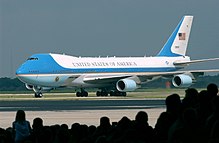Twentieth century design

Who originally coined the term "graphic design" appears to be in dispute. It has been attributed to Richard Guyatt, the British designer and academic, but another source suggests William Addison Dwiggins, an American book designer in the early 20th century[7]
The signage in the London Underground is a classic design example[8] of the modern era and used a font designed by Edward Johnston in 1916.
In the 1920s, Soviet constructivism applied 'intellectual production' in different spheres of production. The movement saw individualistic art as useless in revolutionary Russia and thus moved towards creating objects for utilitarian purposes. They designed buildings, theater sets, posters, fabrics, clothing, furniture, logos, menus, etc.[citation needed]
Jan Tschichold codified the principles of modern typography in his 1928 book, New Typography. He later repudiated the philosophy he espoused in this book as being fascistic, but it remained very influential.[citation needed] Tschichold, Bauhaus typographers such as Herbert Bayer and Laszlo Moholy-Nagy, and El Lissitzky are the fathers of graphic design[citation needed] as we know it today. They pioneered production techniques and stylistic devices used throughout the twentieth century. The following years saw graphic design in the modern style gain widespread acceptance and application.[9] A booming post-World War II American economy established a greater need for graphic design, mainly advertising and packaging. The emigration of the German Bauhaus school of design to Chicago in 1937 brought a "mass-produced" minimalism to America; sparking a wild fire of "modern" architecture and design. Notable names in mid-century modern design include Adrian Frutiger, designer of the typefaces Univers and Frutiger; Paul Rand, who, from the late 1930s until his death in 1996, took the principles of the Bauhaus and applied them to popular advertising and logo design, helping to create a uniquely American approach to European minimalism while becoming one of the principal pioneers of the subset of graphic design known as corporate identity; and Josef Müller-Brockmann, who designed posters in a severe yet accessible manner typical of the 1950s and 1970s era.








No comments:
Post a Comment
Thanks